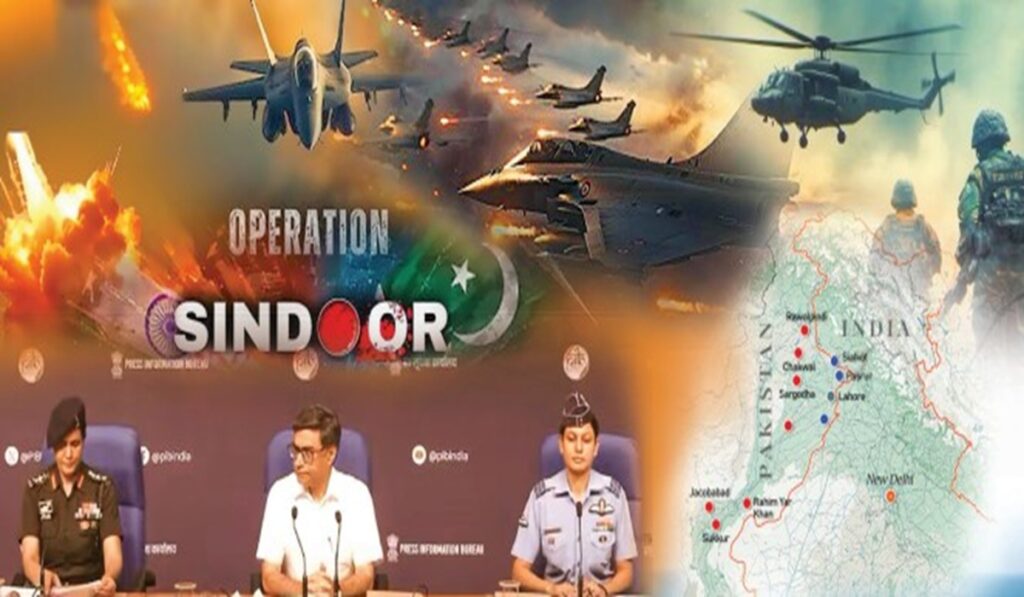The Genesis of Operation Sindoor: Operation Sindoor was launched to counter those who sought to divide India on religious grounds. The terrorists in Pahalgam had done precisely that. Yet, it has now become a mirror reflecting how swiftly this nation transforms itself. Ethnic and religious frenzy, coupled with ugly actions against India’s strength, has squandered our collective wealth. The nation’s face has been smeared with disgrace.
The Illusion of Triumph
Many in India likely believed that Operation Sindoor, in its glorious assault on Pakistan, was a moment of triumph. Meanwhile, the United States, sitting far away, was orchestrating a grand conspiracy for its own benefit. Abruptly, it halted Operation Sindoor and announced a ceasefire. For those unfamiliar with America’s tactics, this move might seem novel. Some might even argue that President Trump, a supposed friend of Modi, must have acted with India’s greater interest in mind. The BJP might propagate such a narrative. But when Trump later denied any role in brokering the ceasefire, the world, including India, was left stunned. The BJP must have been struck dumb. If Trump didn’t orchestrate the ceasefire, did Modi himself call it off? This question looms large, destined to spawn many more.
From Applause to Abuse
The issue transcends this moment. It’s about how applause turns into scorn and how India’s strength, through ugly deeds, smears disgrace on the nation’s face. Only those who love India truly understand the shameful treatment meted out to Operation Sindoor’s heroes by our callous society, illiterate troll generation, and politics. The way our heroes were divided by caste, religion, and politics has left the world in shock. It laments that the very caste and religious divisions Operation Sindoor aimed to combat have now tarnished its legacy. Can PM Modi, the BJP, or their hired, illiterate trolls ever answer for this? Never.
The Symbolic Heroes
In recent days, the nation’s claim of unity with Colonel Sofia Qureshi of the Indian Army and Wing Commander Vyomika Singh of the Indian Air Force turned into a political and identity-driven conflict. On May 7, when Colonel Qureshi and Wing Commander Singh addressed the nation after India’s strikes in Pakistan and Pakistan-occupied Kashmir, the message was clear: India was not just responding to the Pahalgam massacre with force but éloe but doing so on its own terms. Two women officers, representing different religions, became the public face of the armed forces.
The Power of Symbolism
The symbolism of Operation Sindoor was deliberate. The officers represented far more than retribution. They embodied India’s refusal to be divided by the fissures terrorists sought to exploit. Without uttering a word about identity, their presence was the answer. Images went “viral.” Social media erupted in applause. Political leaders across the spectrum showered praise. The military spoke, and the nation listened. For a fleeting moment, the country looked to them and saw its strength. Then, it all unraveled.
The Descent into Divisiveness
On May 14, near Indore, BJP MP Kunwar Vijay Shah uttered a communally and gender-charged remark. He didn’t name Colonel Qureshi, but he didn’t need to. “Those who wiped the sindoor off our daughters… we sent their sister to teach them a lesson,” he said. The sweet sound of applause turned bitter. The officer who stood for India was suddenly reduced to a symbol of communal vengeance. Her religion became a tool for political messaging.
Caste and Religion Rear Their Heads
The narrative escalated. New political players emerged. Samajwadi Party MP Ram Gopal Yadav picked up where Shah left off. At a party meeting in Moradabad, he laid it bare: “They didn’t even know who Vyomika Singh was or her caste, nor did they know about Air Marshal A.K. Bharti. Otherwise, they’d have insulted them too.” His target was the BJP leader from Indore. Yadav continued: “Let me tell you—Vyomika Singh is a Jatav Chamar from Haryana, and Air Marshal A.K. Bharti is a Yadav from Purnia. All three belong to the PDA segment. One was abused because they thought she was Muslim, one was spared because they assumed she was Rajput, and they had no clue about the third.”
From Heroes to Labels
The proud representatives of the armed forces were reduced to caste and religious labels. What Operation Sindoor fought against became India’s reality. The saga continued. Three days after the ceasefire announcement between India and Pakistan, Defense Secretary Misri became a target. Misri didn’t negotiate the ceasefire; he merely announced it. But in a political climate thriving on outrage, facts don’t matter. Misri was branded a villain.
The Wrath of the Mob
His X account went private—not for state secrecy but because an online mob labeled him a traitor. Misri was accused of “surrender,” not for failing to act but for echoing the government’s words. Memes mocked him. Abuse flooded in. The anger didn’t stop with him. His daughter’s phone number was leaked. Her profession was questioned. Her character was dissected by anonymous accounts. This wasn’t the first time the internet attacked those who didn’t align with its vendetta.
The Widow’s Plea
Recall the words of Himanshi Narwal, widow of Indian Navy officer Vinay Narwal, killed in the Pahalgam attack: “We don’t want hatred for anyone. We want peace. But we also want justice.” That was enough. Trolls mocked her grief. They sneered at her appearance. Her lipstick became a political statement. The cycle is now familiar. The story begins with pride. It ends in infamy.
The Cruel Irony: The cruel irony is that Operation Sindoor was meant to answer those who tried to divide India on religious lines. Instead, it has become a mirror showing how quickly this nation turns on itself. Then came the quiet shift. Air Marshal A.K. Bharti took charge of the press briefing. Faces changed. Messages changed. The women were gone. The diplomats were gone. The powerful symbolism that confronted Pahalgam’s communal violence was silently erased.
(NOTE: This exclusive news feature story is transcripted from the cover story of “New Delhi Post” Hindi weekly)


